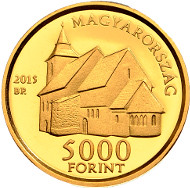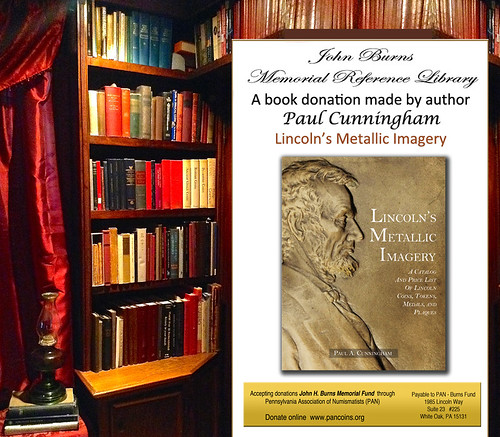
PREV ARTICLE
NEXT ARTICLE
FULL ISSUE
PREV FULL ISSUE
COIN HONORS HUNGARIAN BIBLE TRANSLATOR
One of the new coin designs that caught my eye this week has a connection for bibliophiles. It was also covered in a CoinsWeekly
article on September 24, 2015. -Editor
 
Marking the 425th anniversary of the first, full Hungarian translation of the Bible, the Magyar Nemzeti Bank issues a HUF 50,000 and a HUF 5,000 gold commemorative coin as well as a HUF 2,000 copper-alloy commemorative coin. The coin was designed by Andrea Horváth and features the Calvinist Church of Vizsoly on the front and the initial “V” in the style of the Vizsoly Bible on the back. In July 1590, printing of the first Hungarian translation of the Bible by Gáspár Károlyi was completed in the town of Vizsoly. This work, referred to both as the Vizsoly Bible after the place of printing and the Károlyi (or Károli) Bible after the Calvinist pastor who oversaw the translation, is an invaluable treasure of Hungarian Christianity, language, theology and culture. It is the oldest complete Hungarian translation of the Bible still used today, and until 1975 it was considered to be the single definitive, complete Hungarian text. One key element of the Reformation was that the word of God be accessible and readable to all peoples and all levels of society. It was no coincidence that the first complete Hungarian translation of the Bible was prepared under the influence of Calvinist beliefs. While there had been other translations prior to Károli’s work, only fragments of these remain or they have disappeared completely (their existence is proven by other documents). In 1586, Károli began translating the texts of the Bible from Greek into Hungarian. Based on the uniform grammar and style used in the New Testament, it is likely that Károli himself translated this section, and he also wrote summaries of the chapters. Károli also played a partial role in translating parts of the Old Testament into Hungarian, and in addition to correcting the texts. He also was the editor, annotator, typesetter and preface writer. The printing of the Bible started on 18 February 1589, under the supervision of printer Bálint Mantskovit(s), using paper from Cracow. After nearly one and a half years, the work was completed on 20 July 1590, with some 800 copies printed. The printing was supported by Sigismund Rákóczi, to whose estates Vizsoly belonged (and later Prince of Transylvania) and who was dedicated to seeing the Bible published in Hungarian. Today, there are only 54 remaining original copies of the Károli Bible, which has 2,412 pages, weighs 6 kg and consists of 3 parts. Complete copies are only found in Bratislava, Budapest, Cluj-Napoca, Copenhagen and Vizsoly. The first revision (printing and grammatical errors, rephrasing, typographical changes) was carried out by Albert Szenczi Molnár, who had been Károli’s assistant. Up until 1940, 268 dated editions and 25 undated editions were printed. In 1981, a replica edition of 28,000 copies was issued. The translation of the Bible into Hungarian forged a link to the universal culture of Western Europe. While the language quality did not stand out compared to the ecclesiastic literature of the period, it did have a significant impact on Hungarian literature and language, the linguistic standards developing at that time and the stock of vocabulary and phrases. The basic religious work is one of the most important elements of Hungarian culture. Since January 2015 it is classified as a Hungaricum, representing one of Hungary’s outstanding intellectual works. 
To read the complete article, see:

Wayne Homren, Editor The Numismatic Bibliomania Society is a non-profit organization promoting numismatic literature. See our web site at coinbooks.org. To submit items for publication in The E-Sylum, write to the Editor at this address: whomren@gmail.com To subscribe go to: https://my.binhost.com/lists/listinfo/esylum All Rights Reserved. NBS Home Page Contact the NBS webmaster 
|